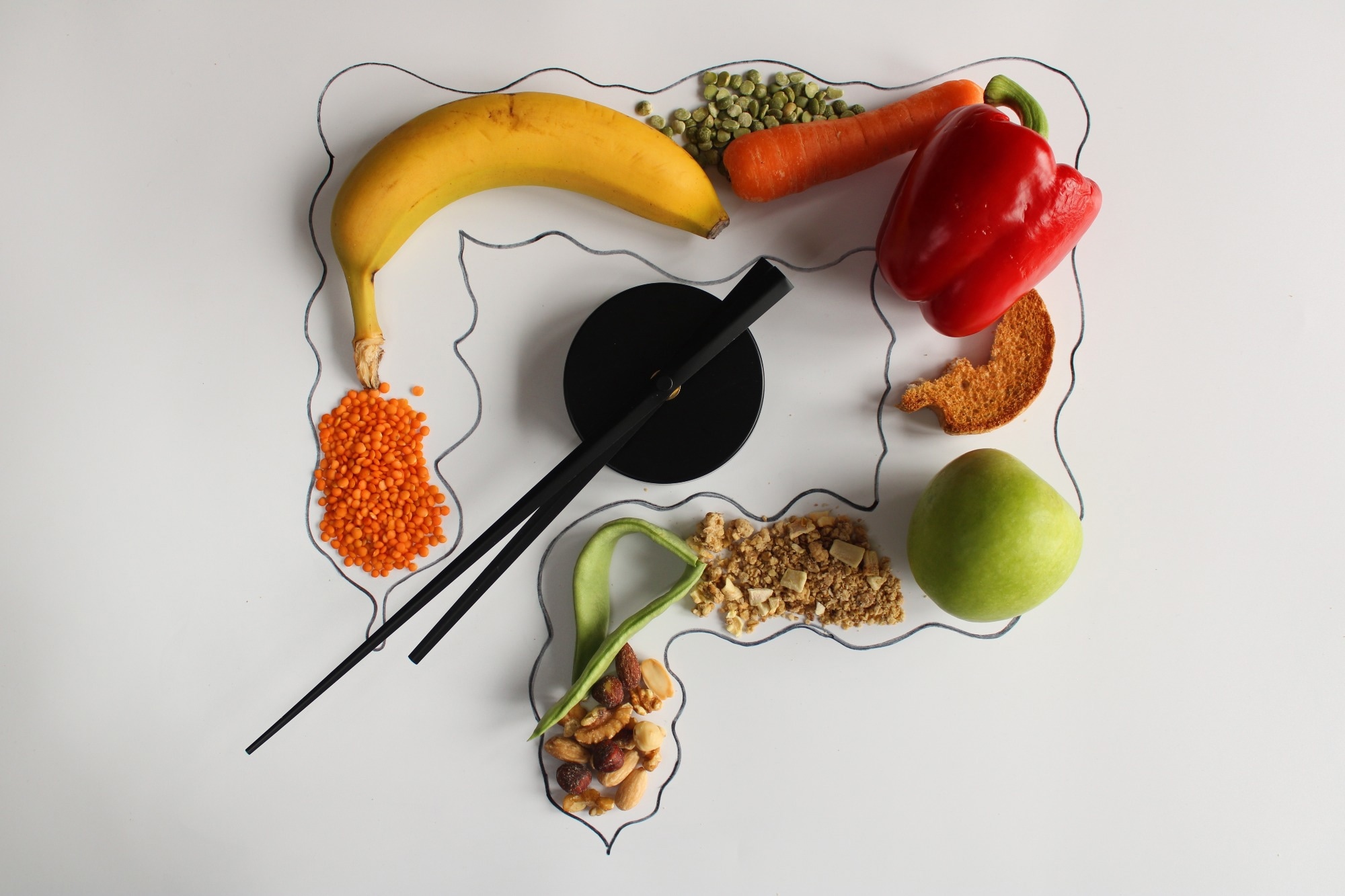Could your diet help control IBD flares? New Dutch research uncovers the hidden food compounds that may tip the balance between remission and relapse.
 Study: Food Compounds Associated With Disease Activity in Inflammatory Bowel Disease. Image Credit: Food Photo Master / Shutterstock
Study: Food Compounds Associated With Disease Activity in Inflammatory Bowel Disease. Image Credit: Food Photo Master / Shutterstock
In a recent study published in the journal Inflammatory Bowel Diseases, researchers in the Netherlands identified food compounds linked to disease activity in patients with inflammatory bowel disease (IBD).
Food is vital in health and disease, including IBD. However, there is no consistent evidence that a well-defined diet can modulate the disease course in IBD. The commonalities among the most studied diets include avoiding processed and canned foods and promoting the intake of vegetables, fruits, chicken, and lean meat.
Nevertheless, the diverse nutritional recommendations and approaches about specific foods make comparing studies difficult. For instance, the Mediterranean and Groningen anti-inflammatory diets encourage wheat intake, whereas most IBD diets exclude wheat. Studies on IBD and diet have primarily assessed food groups or select nutrients.
While these studies have been valuable, food contains a large number of different compounds. Each compound is unique and may have specific health effects alone or in combination with others. As such, research on food compounds offers more comprehensive insights into the effects of individual food compounds or their combinations.
About the study
In the present study, researchers evaluated whether specific food compounds and their combinations are associated with disease activity in IBD patients. They obtained dietary and disease status data from patients with ulcerative colitis or Crohn’s disease at a university medical center in the Netherlands. Patients were stratified into the flare or remission group based on whether they experienced flares or remained in remission during follow-up, respectively.
Flares were defined as active IBD-related hospitalization or surgery, step-up in medication, or endoscopy revealing active disease. A food frequency questionnaire (FFQ) adapted for individuals with IBD was administered at baseline. The authors previously linked two food compounds databases (Phenol-Explorer and FooDB) to NEVO, the Dutch food coding system, generating an integrated database with concentration values of 1,160 compounds, of which 768 were analyzed in this study (those consumed by at least 80% of participants).
Using this database and FFQ data, dietary data of IBD patients were translated into intake levels of food compounds. A random forest analysis was performed to explore compounds associated with remission and flares. Compounds contributing the most to the random forest were assessed for potential biological relevance by examining literature on gut health, IBD, or immunomodulation.
Findings
Overall, the study included 135 patients aged 19-68, who were in endoscopic or clinical remission at baseline. A disease flare occurred in 41 patients during a median follow-up of 29 months. The median time from baseline to relapse was 14 months. The median body mass index (BMI) was 23 kg/m2 for the flare group and 25 kg/m2 for the remission group. The random forest analysis was applied to the intake values of 768 food compounds.
Among the random forest models, those based on up to 75 food compounds showed optimal performance overall. Models performed particularly well in remission prediction, with negative predictive values and specificities up to 79% and 77%, respectively. Overall, 35 compounds, henceforth “selected compounds,” contributed the most to the random forest.
Of these, 25 were fatty acids, including short-chain, polyunsaturated, monounsaturated, saturated, and unsaturated fatty acids. The remainder were ethanol, cellobiose, vanillin, kaempferol-3-glucoside, haem iron, molybdenum, acetylglycine, kaempferol-3-O-acetyl-glucoside, 4-hydroxyproline, and heptadecanoyl carnitine.
Among the 29 compounds with increased intakes in the remission group, butyric acid, capric acid, 4-hydroxyproline, and trans- and cis-linoleic acid reportedly attenuated inflammation in IBD, augmented barrier function, were gastroprotective, or were associated with a lower IBD risk. However, some findings appeared contradictory; for example, palmitic acid and myristic acid, which were also higher in the remission group, have previously been reported to impair intestinal integrity and increase the risk of flare.
Immunomodulatory effects were identified for 11 compounds, while 13 compounds lacked relevant literature regarding their impact on gut health, IBD, or the immune system. Among the six compounds with increased intake levels in the flare group, molybdenum might promote dysbiosis and aggravate colitis.
Conversely, cellobiose and kaempferol-3-glucoside have been reported to attenuate experimental colitis in mice. Suspected immunomodulatory effects were found for trans-11-docosenoic acid. The remaining two compounds had inconsistent or no data on the effects on the immune system, gut health, or IBD.
Conclusions
In sum, the random forest models based on up to 75 compounds achieved optimal performance. Fatty acids were the compounds that contributed the most to the models.
The contribution to the model by a compound may stem from a biologically relevant difference in intake between flare and remission groups. For some compounds, however, this may also be due to coincidence or co-occurrence in the diet with other compounds that have biological effects. This may help explain some of the contradictory findings.
The study also highlights the importance of considering "reverse causation," where the disease itself influences dietary choices. For instance, patients who experience frequent flares might strictly avoid fatty dairy products. While this may help alleviate symptoms, it could also unintentionally reduce their intake of beneficial fatty acids, such as butyric acid, potentially worsening their condition over time. This complexity is revealed by the compound-level analysis; the study noted that while patients in remission ate less dairy overall, their intake of specific beneficial fatty acids from sources like fatty butter and cheese was actually higher.
The analytic approach used in this study may also help uncover diet-disease relationships in other chronic conditions.
Further research is needed to clarify these associations and validate their biological significance.